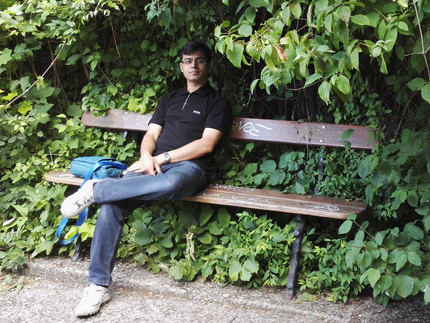Reza Dokht Dolatabadi
Reza Esfahani works in the fields of seismic and audio signal processing and machine learning, specializing in particular on big data analysis, applications of deep learning in seismology, generative models, and inverse problems. The focus of his PhD study was on developing new seismological signal processing approaches for modeling and analyzing big data in seismology in the spirit of music information retrieval strategies and deep learning methods. A part of his PhD project involved developing a generative model based on Condition Generative Adversarial Networks (CGAN) to simulate nonstationary ground shaking signals in time, frequency, and time-frequency domains. He also developed a visualization software for audio and music records.
Areas of Interest and Research
Signal processing, Music information retrieval, Deep learning, Generative models, Ground motion modeling, and Sparse representation.
Education
PhD in Seismology, Institute of Geoscience, University of Potsdam, Germany – Oct 2022 (Thesis)
M.Sc. in Seismology, Institute of Geophysics, University of Tehran, Iran – Sep 2017
Software
GVM-Player: Audiovisual representation of video streams together with multiple audio tracks.
TFCGAN: Ground motion simulation in time-frequency domain based on conditional generative adversarial network and phase retrieval approaches
SparseTF: Sparse Time-Frequency representation
Papers
Esfahani, R. D. D., F. Cotton, M. Ohrnberger, and F. Scherbaum (2022). TFCGAN: Nonstationary Ground-Motion Simulation in the Time–Frequency Domain Using Conditional Generative Adversarial Network (CGAN) and Phase Retrieval Methods, BSSA: DOI:10.1785/0120220068 (PDF)
Content: We developed a generative model based on conditional generative adversarial networks for ground-shaking simulation in the time-frequency domain. It is similar to the music generation models. This model is conditioned on the physics parameters of earthquakes (magnitude, distance, and the shear wave velocity near the near-surface). After generating the amplitude of the time-frequency domains using the CGAN model, instead of classical conventional methods that assume the amplitude spectra with a random phase spectrum, the phase of the time-frequency domains is recovered by minimizing the observed and reconstructed spectrograms based on a phase retrieval approach.
Scherbaum, F., Rosenzweig, S., Esfahani, R. D. D., Mzhavanadze, N., Schwär, S., Müller, M. (2022). Novel representations of Traditional Georgian Vocal Music in Times of Online Access, to appear in “Georgian Traditional Polyphony - Modern Trends and Development Perspectives”, Ed. Rusudan Tsurtsumia & Giorgi Donadze. (PDF)
Content: We developped a web-based interface which shows video representations of songs in which a cursor follows the pitch- and note trajectories while you listen to the music. For this purpose we have incorporated the pywebaudioplayer by Pauwels & Sandler (2018), so that the volume of the individual voices can be individually controlled.
Esfahani, R., K. Vogel, F. Cotton, M. Ohrrnberger, F. Scherbaum, and M. Kriegerowski, 2021, Exploring the Dimensionality of Ground-Motion Data by Applying Autoencoder Techniques, Bulletin of the Seismological Society of America (BSSA), DOI:10.1785/0120200285. (PDF)
Content: Similar to music information retrieval and speech signal processing, seismology is experiencing exponential growth in data acquisition by modern seismological networks. We use an autoencoder technique to analyze a large volume of ground motion data, evaluate the required parameters, and generate synthetic ground motion data in the Fourier amplitude spectra (FAS) domain. This method is tested on two synthetic datasets and one real dataset. The application on the real dataset shows that the substantial information contained within the FAS data can be encoded to a four to five-dimensional manifold. Consequently, only a few independent parameters are required for efficient ground motion prediction.
Conference papers
Esfahani, R., F. Cotton, and F. Bonilla,Temporal Variations of Shallow Material Properties During the Kumamoto Earthquake Sequence, EGU 2022.
Esfahani, R., F. Cotton, and F. Bonilla,Temporal Changes of Shallow Material During Kumamoto Earthquake by Autocorrelation Function and Interferometry Method, SSA 2021.
Esfahani, R., F. Scherbaum, F. Cotton, and M. Ohrrnberger, An efficient physic-based event detection algorithm inspired by music information retrieval, EGU 2021.
Esfahani, R., K. Vogel, F. Cotton, M. Ohrrnberger, F. Scherbaum, and M. Kriegerowski, Exploring the Dimensionality of Ground-Motion Data, EGU 2020.
Contact
E-mail: r.d.d.esfahani(at)(dot)gmail(dot)com

